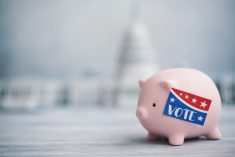How many investment avenues provide the opportunity to double your money in four years? Using the rule of 72, an 18 per cent compound annual growth rate (CAGR) can quickly be calculated. Lots of fun, with lots of exciting twists and turns including the 2018 mini-bear market and the COVID plunge of 2020.
The Titanium Strength Portfolio (TSP) is meant to demonstrate how a well-selected group of stocks can provide returns well in excess of other investment avenues, with limited effort. Following a similar approach as with my registered Tax-Free Savings and Registered Retired Savings Plan accounts, I expect its long-term performance to be in the 10 per cent range.
Read Also

Gentle treatments for pain in the neck
Heading toward year-end, people unknowingly tense up against the cold and busyness, causing neck pain that can often be treated with appropriate support and gentle mobility, athletic therapist Kathlyn Hossack says.
For more fun and enhanced returns, my non-registered accounts are managed differently, although with many of the same basic principles. In the summer of 2015 for newsletter purposes, I set up a separate internet brokerage account. Subscribers are informed of every move as I make them. This is where the rubber really hits the road as it is real money with real results. The summer of 2015 was nearly six years ago, but as with real portfolios not all the money was deposited at once. On February 25, the value of the account had doubled my deposits. I calculated the average time of capital employed at 46.6 months. March was another great month and by its end for four full years, the account was up 115 per cent.
Numerous other investors might have achieved similar or even better results, given the speculative era we seem to be in. As well, it’s easier to make high percentage returns on small portfolios. In this case, the capital employed was significant, well over six digits. Before I discuss how the results were achieved, let me first discuss what I didn’t do.
First, I did not ride the coattails of hot spec stocks like Tesla or EHang. While this portfolio has companies with stronger growth profiles than the TSP, they are not speculative. The top five positions on the U.S. side are Berkshire Hathaway, which I’m sure you’ve heard of; Parker Hannifin, a diversified industrial company; Williams-Sonoma, a furniture and household goods retailer; Alphabet, owner of the highly profitable search engine Google; and Laboratory Corp, a health diagnostics and research company.
On the Canadian side my top five holdings are TFI International, a trucking and logistics company, Canadian Imperial Bank of Commerce, Bank of Montreal, Canadian National Railway and Manulife, all of which need no introduction.
Second, as an investor rather than a trader, I did not regularly buy and sell. Many of the above names were included early and have been added to as the portfolio grew. Only 11 sales have been made to date, with one forced due to a takeover and another to reduce a position size that became large. That is only two sales per year. As a taxable account, why trigger additional taxes? It is best to sell only when the valuation appears excessive.
Third, I did not convert much Canadian currency to U.S. currency at rates over 1.25 CAD to USD. In fact, because of the exchange rate, almost three-fourths of the money was employed on the Canadian side of the portfolio. The severe underperformance of the Canadian market was a drag on overall performance but an issue I’m optimistic will turn around. During the first quarter, the Canadian market outperformed the U.S. S&P 500 with a 7.3 versus 5.8 per cent gain. As valuation rather than speculation started to re-emerge, this portfolio was up an astounding 21.9 per cent in the quarter.
Fourth, I did not panic during the sharp sell-offs in 2018 or 2020. Short-term market gyrations are totally unpredictable. The COVID crash seemed like complete market overreaction, which it turned out to be.
And finally, I am not going to suggest this level of performance is sustainable. Many newsletter writers and pundits will point to past success and paint rosy pictures of future performance. While I believe what I do is repeatable, unlike picking spec stock successes, future results will be more modest. My longer-term goal is to achieve 12 to 15 per cent CAGR. Trying to achieve outsized performance could lead to overreach, probably hurting results.
That’s a bunch of things I didn’t do. The next couple of articles will delve into what I did.
















